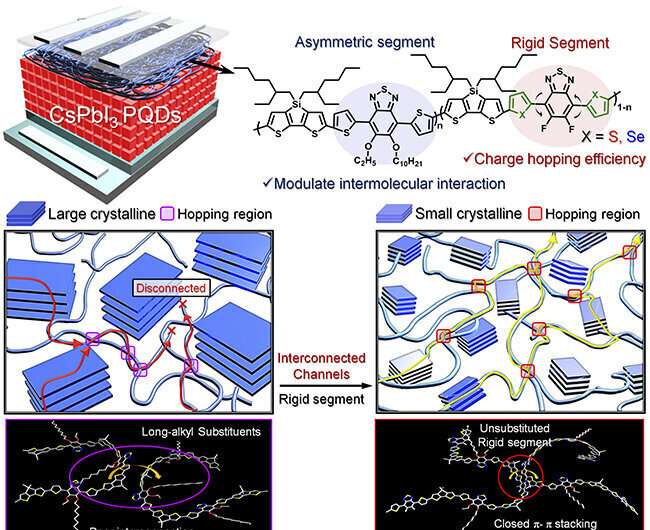This article has been reviewed according to Science X's editorial process and policies. Editors have highlighted the following attributes while ensuring the content's credibility:
fact-checked
peer-reviewed publication
trusted source
proofread
Improving dopant-free polymeric hole transport materials for perovskite quantum dot solar cells

Solar cells are considered to be an environmentally friendly source of power generation that can effectively reduce the impact of pollution on the environment. In particular, perovskite quantum dot solar cells have drawn significant attention from the academic community due to their lower production cost and their ability to be applied to flexible materials, which conventional silicon solar cells lack.
The efficiency of perovskite quantum dot solar cells is largely dependent on the performance of hole transport materials that are responsible for charge transportation. However, the use of conventional hole transport materials in perovskite cells can result in rapid degradation due to dopants. As a result, there has been a need to research alternative hole transport materials that do not require dopants.
The research team led by Professor Taiho Park and Ph.D. candidates Dae Hwan Lee and Seyeong Lim from the Department of Chemical Engineering at POSTECH has fabricated a new design of polymeric hole transport materials that constitute a crucial element in perovskite quantum dot solar cells, leading to significant increase in their efficiency. The research findings have been published in ACS Energy Letters.
The team designed hole transport materials that include polymers based on sulfur and selenium compounds. These polymers exhibit structural features, such as planarization and locking of intermolecular arrangements, which increase charge mobility. Furthermore, asymmetric alkyl substituents of the polymers facilitate molecular interactions, thereby complementing the electrical properties of cells.
The effectiveness of the newly designed polymers was evaluated through tests using a control group. The results indicate that solar cells employing hole transport materials containing selenium compounds achieved 15.2% of power conversion efficiency (PCE), maintaining 80% of their initial PCE even after 40 days.
The findings of this research demonstrate that the newly designed hole transport materials can effectively increase charge mobility without the use of dopants, resulting in the highest PCE and increased stability in dopant-free perovskite quantum dot solar cells.
Professor Taiho Park who led the research explained, "The research findings represent a paradigm shift from conventional charge transport materials and are expected to be used in future research on solar cell devices."
More information: Dae Hwan Lee et al, Tailoring Rigid Segments in Dopant-Free Polymeric Hole Transport Materials for Perovskite Quantum Dot Solar Cells, ACS Energy Letters (2023). DOI: 10.1021/acsenergylett.3c00211

















